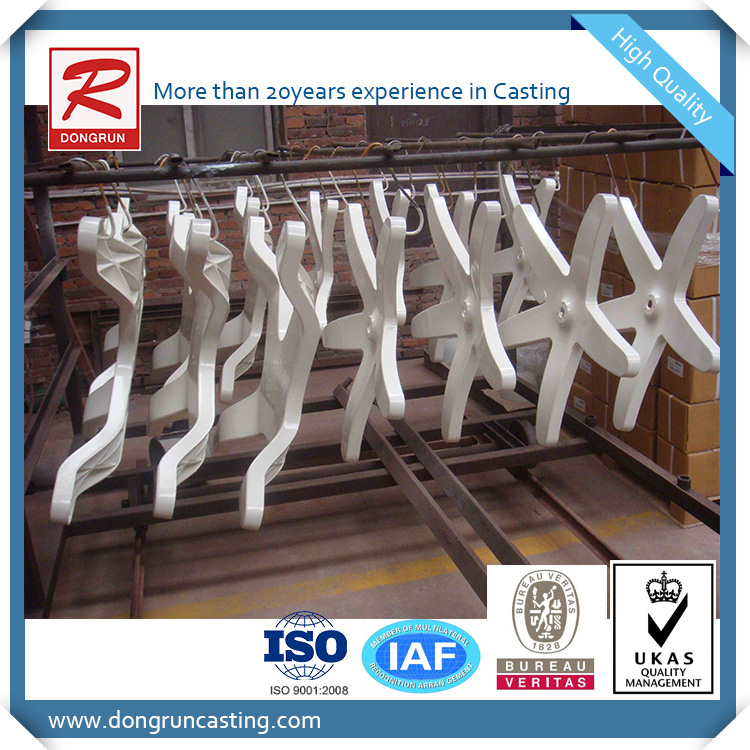Aluminum is a popular material for furniture bases due to its lightweight nature, corrosion resistance, and excellent strength-to-weight ratio. Casting aluminum furniture bases is a precise process that involves creating a mold, melting and pouring aluminum, and post-processing for quality and durability. This article outlines the essential steps and considerations for casting aluminum furniture bases effectively.
1. Design and Mold Preparation
A. Product Design
The process begins with a detailed CAD (Computer-Aided Design) model of the furniture base. The design must account for structural integrity, weight distribution, and aesthetic requirements. Features such as support ribs, mounting holes, or decorative patterns should be integrated at this stage.
B. Mold Selection
Depending on the production volume and design complexity, different mold types are used:
Sand Molds: Ideal for low-volume or large, intricate shapes.
Permanent Molds (Gravity Die Casting): Suitable for medium to high-volume production with consistent quality.
Die Casting (High-Pressure): Used for mass production and precise detailing.
Mold materials must withstand high temperatures and repeated use without deforming.
2. Aluminum Alloy Selection
Common aluminum alloys used for furniture bases include:
A356: Known for excellent casting characteristics and corrosion resistance.
ADC12: Popular in die casting for good mechanical properties and fluidity.
6061 (in billet form, sometimes used post-casting): Offers high strength and is often used in structural applications.
The choice depends on the required mechanical properties, finishing options, and cost considerations.
3. Melting and Pouring
A. Melting Aluminum
Aluminum is typically melted in an electric or gas-fired furnace at approximately 660°C (1220°F). Fluxing agents may be added to remove impurities and improve metal quality.
B. Pouring Process
The molten aluminum is carefully poured into the mold. The method depends on the casting technique:
Gravity pouring for sand and permanent molds.
High-pressure injection for die casting to ensure fine detail and reduce porosity.
Temperature control and pouring speed are critical to avoid defects like shrinkage, air pockets, or incomplete fills.
4. Cooling and Solidification
After pouring, the aluminum is allowed to cool and solidify within the mold. Cooling rates affect the microstructure and mechanical properties of the casting. In some processes, controlled cooling systems are used to enhance strength and reduce internal stresses.
5. Mold Removal and Cleaning
Once solidified, the mold is removed:
Sand casting requires mold breakup.
Permanent and die casting involves opening the reusable mold.
The casting is cleaned using shot blasting, tumbling, or chemical cleaning to remove residues, flash, and scale.
6. Machining and Surface Finishing
Machining is carried out to ensure dimensional accuracy and fit for furniture assembly. Common operations include drilling, tapping, and milling.
Surface finishing options for aluminum furniture bases include:
Powder coating for color and corrosion resistance.
Anodizing for a durable, decorative finish.
Polishing or brushing for aesthetic appeal.
7. Quality Control and Testing
Final products are inspected for:
Dimensional accuracy
Surface finish
Internal defects (using X-ray or ultrasonic testing)
Mechanical properties (strength and hardness tests)
Meeting quality standards ensures the reliability and longevity of the furniture base.
Conclusion
Casting aluminum furniture bases involves a combination of design precision, material science, and manufacturing expertise. By selecting the right casting method and paying attention to each stage—from mold preparation to final inspection—manufacturers can produce strong, lightweight, and visually appealing bases suitable for modern furniture applications.
Dongrun Casting has 20000 square meters of facility houses and 200 production & test equipment, From quotation and tooling design to casting and finished machining, we can work with you at every stage. We serve a wide range of industries-from Fortune 500 corporations to small and midsize OEMs. Our products include Automotive&trucking, Electric Utility & Communications, Metering Systems, the Hydraulic Industry, Medical Devices, Lighting, Fuel and Gas Pressure, and Furniture parts.
More Details: www.dongruncasting.com

